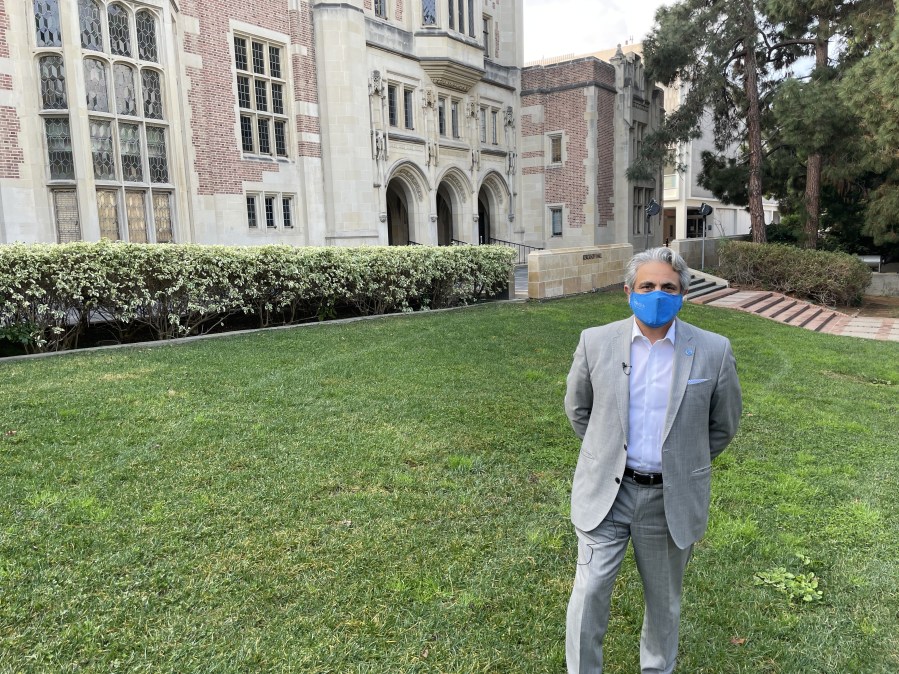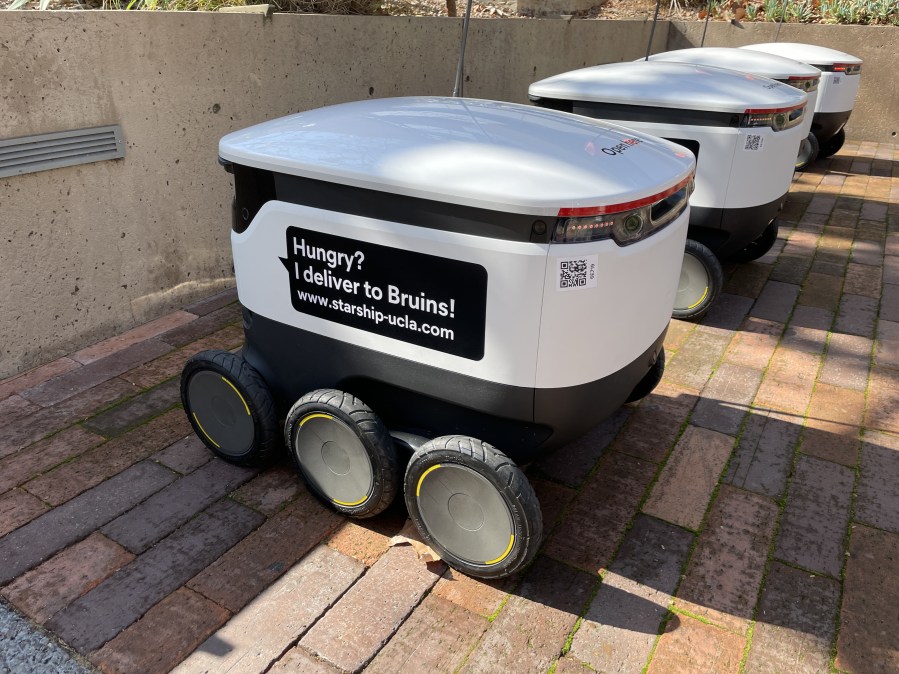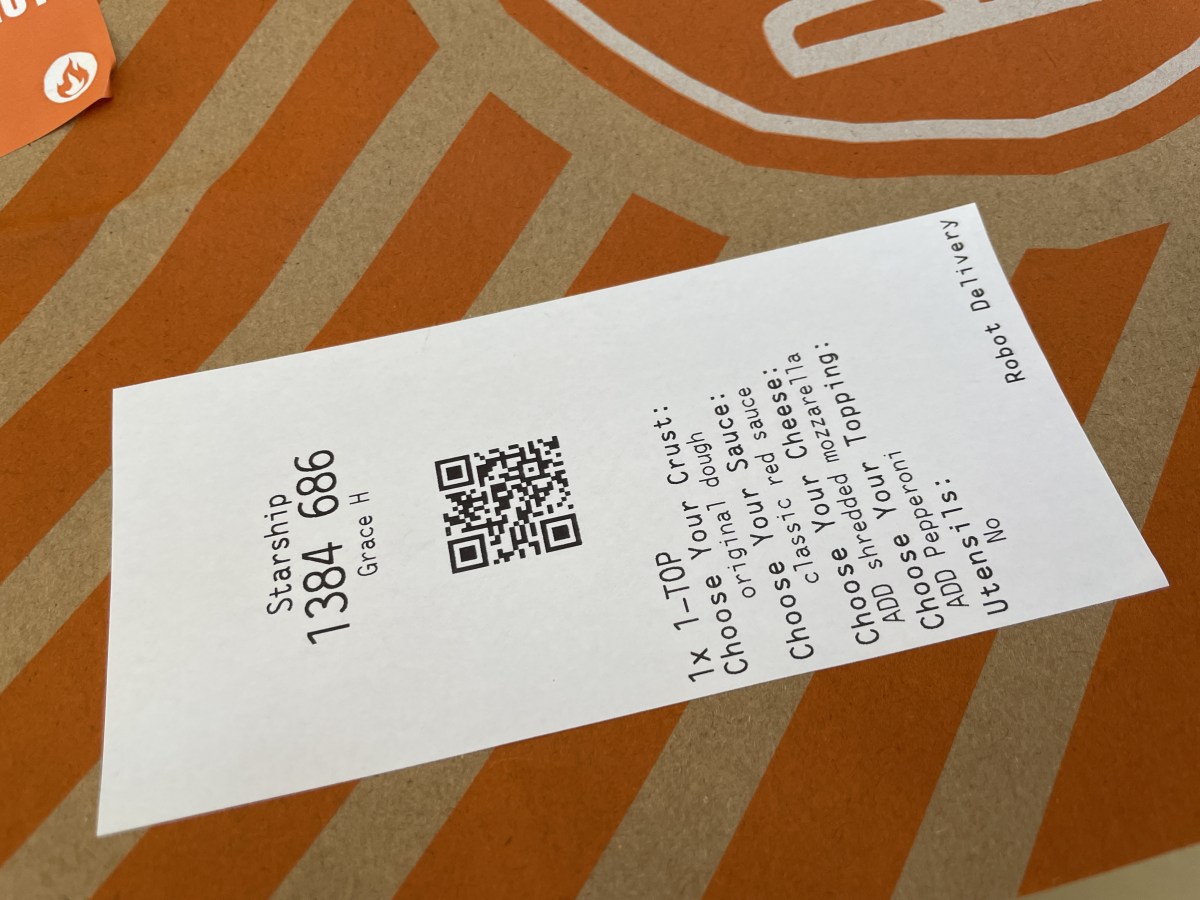Ordering food delivery just got easier on the UCLA campus thanks to robots! The University has teamed up with a company named Starship Technologies to deploy several robots that deliver from on-campus eateries.
Once we got to campus, we found out that tech is deeply connected to the school’s history.
“UCLA is the birthplace of the Internet … so technology is right on our priority list,” started Pouria Abbassi, Executive Director of the Associated Students UCLA (ASUCLA). They provide all of the on-campus services, including dining, for students and staff.

Since cars have limited access to the sprawling and hilly campus in West Los Angeles, the school decided to get creative with a high tech delivery solution.
“The response has been just 100 percent excitement, the energy that it has brought to campus,” explained Abassi.
The contactless food delivery robots are from a company called Starship Technologies. The company was started by some of the same founders of Skype.
“Our robots have 10 cameras on them … and multiple different sensors, ultrasonic sensors, GPS, and rotational sensors, so they can determine where they are to the nearest inch,” explained Jeff Johnston with Starship Technologies.

There are now several autonomous robots delivering food from three of the seventeen on-campus eateries. Eventually, the goal is to have them deliver from all on-campus restaurants.
“You can get pizzas, you can get coffees, pastries,” said Abassi.
The robots can carry about 20 pounds or about three grocery bags worth of items. There’s also a special holder inside that can accommodate up to six drinks.
Students can place orders from anywhere on campus. Once the food is loaded in, the robot finds its way to the dropoff point, avoiding people and obstacles in it’s way.
We watched as the robot made its way from the restaurants to the drop off point. It’s a deliberate process, with the robot speeding up and slowing down as necessary to make the delivery. The robots learn from every delivery and “teach” the other robots on the campus fleet so they’re constantly getting smarter and more effficient.

One the robot makes it to the destination, the student confirms they are nearby and the top of the robot unlocks to reveal the food inside.
“At every campus we’ve been at, they really take pride in having them on campus, and they treat it almost like a third mascot to what they already have,” explained Johnston when I asked if students “mess” with the robots.
If the robot runs into trouble, remote teams are standing by to take control. Starship also hires local students to help run the on-campus program.
“It it gives a great opportunity to employ part-time students, full-time students, that they wouldn’t normally have and they get experience in a field that hopefully, they want to join after,” added Johnston.
While the robot we tracked did make a wrong turn down an alley, it eventually realized its mistake and the pizza found its way to our student tester. Delivery times will vary since right now there are not that many students or staff on campus due to the pandemic. The true test will be when tens of thousands of people flood the campus on a daily basis.
Once our pizza was delivered, I had one final question: do you tip the robot for a job well done?
“No, you don’t need to tip the robot… that’s the benefit of a robot, is it keeps costs down and it’s glad to work for anybody at anytime,” concluded Johnston.
Starship has 1,000 robots operating in five countries around the world. Last month, the robots hit a milestone of 1 million deliveries.
Follow Rich DeMuro on Instagram and listen to the Rich on Tech Podcast, which is filled with the tech information you should know plus answers to the questions you send Rich!












